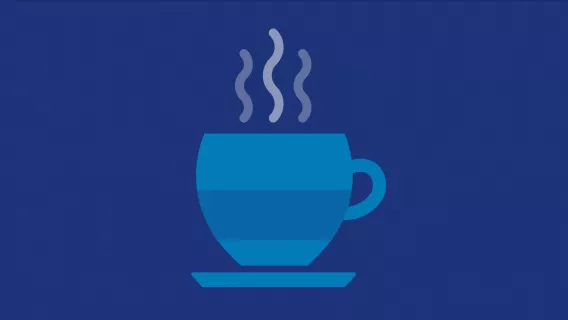This section focuses on the steps to take in supporting a young person’s transition at school. In the first instance, please watch the video where Hannah talks about how to support a young person’s transition at school.
This section also contains key findings from research, impactful quotes from a young person and parent, starting points to think about what you can do, as well as resources for further study. Please navigate through this section and complete the corresponding worksheet in the workbook.
Summary of steps to take in facilitating a young person’s transition at school
- The student decides to transition at school.
- The student or parent/s or guardian/s approach/es the designated support person in the school.
- A meeting is scheduled between the student, the designated support person and the student’s parent/s or guardian/s. At this meeting, the prompt questions below can be used to develop a transition action plan.
- Agreed actions are taken and updated and reviewed with the student and their parent/s or guardian/s. No actions are taken without prior permission from the student.
- Check-ins and on-going supports are facilitated with the student and their parent/s or guardian/s where necessary.
Prompt Questions to Facilitate a Young Person’s Transition at School
- What is the student’s preferred name and pronoun?
- Is there any other relevant background information that the student wants noted?
- Who does the student want to inform of their transition?
- If peers are to be informed, how will this be done?
- How will staff be informed of the student’s transition?
- What school records and documentation need to be changed?
- Which toilet does the student wish to use? And how can this be facilitated?
- What changing facilities does the student wish to use? And how can this be facilitated?
- Has it been made clear to the student that they may use the toilet and changing facilities with which they feel most comfortable?
- If the student’s choice is a universal access toilet/changing facility, the student should have full access to this toilet at all times.
- Have any worries or concerns of the student and/or parent/guardian regarding bathrooms or changing facilities been heard?
- What is the plan for any preventative measures and safeguards required?
- What are the student’s preferences regarding their uniform and how will this be facilitated?
- Is there a gender-neutral uniform option if this is what the student wants?
- Have staff had adequate education to ensure the student feels respected and supported and that discrimination is proactively prevented?
- If staff have not had this education, how will this happen?
- Have peers had adequate education to ensure the student feels respected and supported and that discrimination is proactively prevented?
- If peers have not had this education, how will this happen?
- Who is the designated support person/people that will maintain on-going check-ins with the student and their parents/guardians?
- How will these check-ins/reviews work and how often?
- Who will review and, if necessary, amend school policies? E.g. school admission policy, uniform policy, anti-bullying policy, RSE, health & safety.
- Who will review and start the process of ensuring that bathrooms and changing facilities are inclusive of everyone?
- Is there an equality & diversity policy that contains explicit instruction about gender identity and gender expression? If not, how will such a policy be developed and who will be responsible?
If it's in school [TGD youth are] teenagers. They're young, they're emotionally minors. They are young people that need to be supported and not everything can be left to them.
(Esme, Age 17)

Research
- Many post-primary schools are open to facilitating a young person’s transition, but are ill-prepared to do so
- Most schools do not have a gender identity and gender expression policy to guide staff
- School staff typically lack education and experience in facilitating a student’s transition and are therefore anxious about making a mistake that could harm the student
- School staff benefited from bringing in TENI for advice and support to developing an individual transition plan as well as in reviewing school policies
- Trans and gender diverse youth and their parents highly valued regular, proactive engagement with school staff, particularly in the lead up to and in the first year following the student’s transition
International research suggests:
- that proactive engagement and ongoing dialogue between families, educators, and other service providers can ensure that issues and challenges that trans and gender diverse youth experience can be attended to in a timely fashion (McBride and Schubotz, 2017)
- that it is important that trans and gender diverse youth are able to identify at least one supportive member of school staff and that schools should designate a specific member of staff to act as a liaison between trans and gender diverse youth and school leadership (Porta, et al. 2017)
Last April [my child] came out as trans and I called the home school liaison teacher […] and she was great, I have to say. She was up-to-speed, she knew all about it. And I said that he wanted to wait up to September to make the change. But I heard nothing then, and even when he was due to go back in August, I was trying to ring her to get on to her and I couldn't get of her.
(Deborah, Parent of a Trans Boy, Age 16)
What you can do
- Contact TENI for advice and support around developing an individual transition plan based on their wrap-around model of care
- Use the checklist in the workbook accompanying this e-resource (Worksheet 11: Steps to Take in Facilitating a Young Person’s Transition’) to aid your first conversation with the student and their family
- Write your school’s procedures for supporting trans and gender diverse young people into your gender identity and gender expression or equality & diversity policy
Next steps
Complete ‘Worksheet 11: Steps to Take in Facilitating a Young Person’s Transition’ and continue to Section 12: Support Groups.
